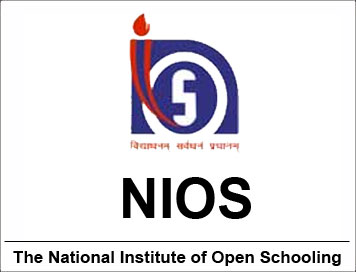(Download) NIOS Syllabus Of Painting Senior Secondary
Disclaimer: This website is NOT associated with CBSE, for official website of CBSE visit - www.cbse.gov.in
(Download) NIOS Syllabus Of Painting Senior Secondary
RATIONALE
Painting is a form of art. It is a powerful way of self-expression providing a sense of fulfillment and achievement. This course is aimed at providing with necessary inputs of practical work and skill to the learner’s familiarity of the theory of art through ages. This will further help in aesthetic development, ability to appreciate and discover beauty of life and integrate it into one’s own personality. Thus, art will make us more sensitive to our Cultural Heritage, environment and develop a creative attitude in day-to-day activities.
COURSE OBJECTIVES
The objectives of this course are to:
- develop knowledge and understanding of visual art;
- develop skill, ability and aesthetic attitude;
- acquaint about the development of art and various styles of art expression and their salient features;
- develop understanding about the visual aspects of composition, division of space, rhythm, texture, tonal gradation and expressive value of line in a learner;
- to work with harmony and contrast of colour, having various drawing and painting materials such as pencils, pastels, water and oil colour, ink etc.
COURSE STRUCTURE
This course in painting for the senior secondary level has been divided into three compulsory modules namely :
- History and Appreciation of Indian art.
- History and Appreciation of Indian painting and Sculptures
- Folk Paintings It also includes one practical paper having three parts.
- Object Drawing
- Painting and Composition
- Folk Art as MotifCOURSE DESCRIPTION
Module – 1 : History and Appreciation of Indian art.
(From 2500 B.C. to 16th Century A.D.)
Approach :
The art objects, belonged to Indus Valley Civilization, are the only available earliest evidence of great tradition of India. The nature form of these art works help us to imagine that tradition of Indian art must have begun long before 2500 B.C. Changing condition of politics and religions kept on motivating Indian art through the ages from 4th C. B.C. to 16th C.
A.D., leaving a missing link for approximately 1000 yrs from post Indus Valley civilization to Mauryan period. Indian Art under the patronage of Hindu, Muslim, Buddhist and Jain rulers, flourished till 16th C. A.D. to face a new era of art movement after the Mughals became the rulers of India.
Unit 1.1 Art of Indus Valley Civilization
(Harappan and Mohen-jo-daro 2500 B.C. to 1750 B.C.).
Brief introduction and appreciation supported with drawing, maps, and pictures
of the following art objects:
Objects |
Collection |
|
National Museum, Delhi |
|
National Museum, Delhi |
|
National Museum, Delhi |
|
National Museum, Delhi |
Supportive video programme(s)
-
Mother Goddess
-
Seal with Bull Design
-
Painted Pottery
-
Jewellery (necklace)
Unit 1.2: Art of Mauryan to Gupta Period
(4th Century B.C. to 6th Century A.D.)
Brief introduction and appreciation supported with drawing and pictures of the following art objects:
Objects |
Collection |
|
Sarnath Museum |
|
Patna Museum |
|
Madhya Pradesh |
|
National Museum, U.P. |
|
Sarnath Museum, Madhya Pradesh |
|
Government Museum, Mathura |
Supportive video programme(s)
-
Nataraja, (Cosmic dance of lord Shiva
-
Dokra Casting (Trible Bronze casting)
-
Triumph of Labour
